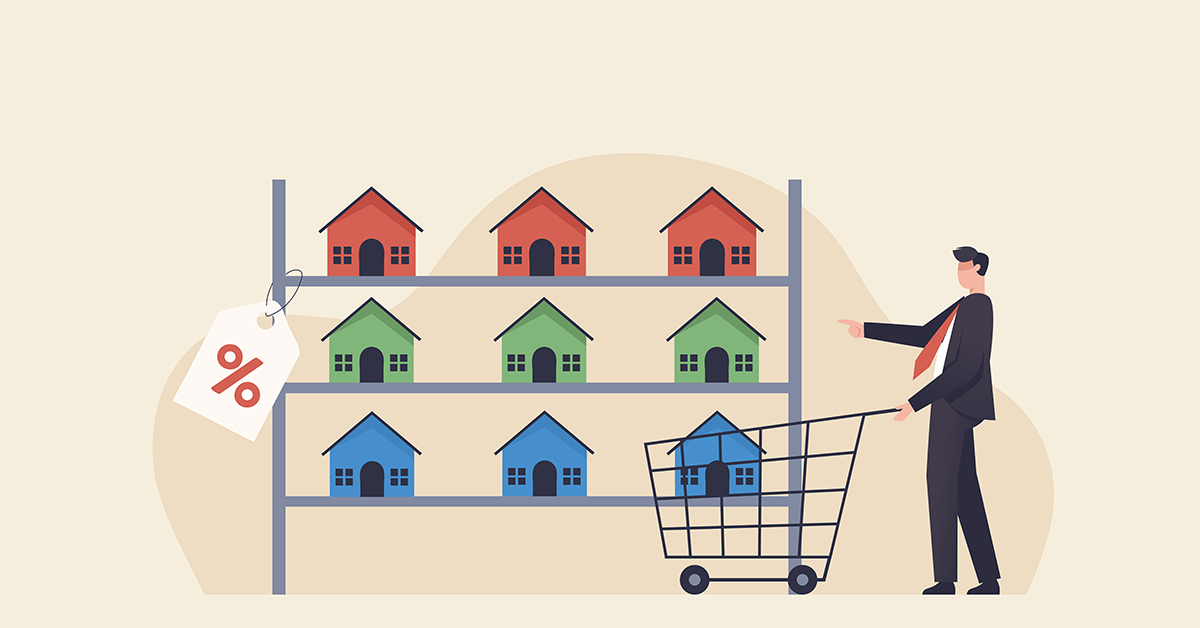
Chances are you have read or seen a news article on interest rates in recent weeks, possibly without even realizing. Maybe you heard about the Federal Reserve planning to increase rates, 30-year mortgages averaging more than 5%, or the recent rise in inflation. All of these topics are inherently tied to interest rates in one way or another. This might raise the question: what exactly is an interest rate and why should I be interested?
What is Interest? What are Interest Rates?
Interest is a payment that you either make for borrowing money, or receive for lending money. If you have money in a bank savings account, you are in essence loaning your money to that bank, and they pay you a small interest payment for keeping your money there. On the other hand, if you need to finance a purchase, such as a car, you may borrow money from a bank, and you’ll pay them interest for borrowing the money.
Interest rates are expressed as a percentage, and reflect the amount you’ll pay or receive as a percentage of the amount being loaned or borrowed. For example, if you borrow $100 and it carries a 3% interest rate, you will pay $3.00 per year. If you buy a bond, you are essentially loaning your money to a corporation or government entity, so the interest rate on the bond is the amount you will be paid. To use the previous example, if you buy a $100 bond with 3% interest, the issuer of that bond will pay you $3.00 of interest per year.
Who determines interest rates?
There are a number of factors that can affect interest rates; however, the Federal Reserve has the most control over affecting interest rates across the economy. In recent weeks, the Federal Reserve has made changes that have had caused interest rates to increase. They have also indicated that they will continue to increase interest rates over the next few months in an attempt to combat rising inflation. Let’s take a look at how the Federal Reserve affects interest rates and why they may continue making changes.
The Federal Reserve acts under a dual mandate with two goals: create an economy with price stability (low inflation) and reach maximum employment. When either of these goals are not being met, the Federal Reserve acts to affect either of these metrics. While we currently (April 2022) have a very low unemployment rate, inflation is much higher than the Federal Reserve’s target rate of 2%. Therefore, the Federal Reserve has indicated they will use the monetary policy in an attempt to combat these rising costs.
How does The Federal Reserve affect interest rates?
The Federal Reserve mainly has three courses of action in order to enact monetary policy, which are:
- Increase or decrease short-term interest rates.
- Open Market Operations (Buying or Selling Securities).
- Changing the reserve requirement for banks.
All of these individual policies have the effect of changing the supply and demand balance. When money is easy and cheap to borrow (low interest rates), both companies and consumers alike will be more likely to buy goods, or make investments, increasing overall demand. When money is more expensive to borrow (high interest rates), individuals and companies are less likely to borrow money, creating less demand for goods and services.
How does this affect me?
An increase in interest rates can have a chilling effect on the economy as a whole, but it also affects individuals. Let’s look at an example of a mortgage. If you are going to buy a home with a 30-year mortgage and take out a $300,000 how would a change in rates affect you?
| Monthly Payment: | |
| 3% Interest Rate | $1,265 |
| 5% Interest Rate | $1,610 |
As you can see, a 2% increase in the mortgage rate for this home causes the monthly payment to be $345 more per month – for 30 years! This increase is how a rise in interest rates can cool the economy. Individuals may be less likely to buy a home, buy a car, or finance a kitchen remodel when money is much more expensive to borrow.
Is there any upside to rising interest rates?
While there are some negative side effects to rising interest rates, there are some upsides as well. Many of us have felt the effects of inflation in recent months. A rise of interest rates in this context is being used to help combat rising inflation. By decreasing the overall demand across the economy, this can decrease prices in the near term, while allowing supply to ramp back up and meet future demand.
Another area that can benefit from rising interest rates are new fixed income investments. Because of historically low interest rates, many fixed income products (bonds, money market accounts, certificates of deposits, stable value funds) have had lower than usual returns. While existing fixed income investments can have negative returns when interest rates rise, new investments in fixed income stand to benefit and potentially offer higher returns.
Rising interest rates will certainly have a large impact on the individual level and the economy as a whole. While paying more to borrow money may not be a fun proposition, we can hope that these changes effectively address the recent rise of costs. Stay up to date on financial topics by downloading the BPAS University app.
* The information provided is for general information only and should not be construed as advice. Please consult with your financial advisor in regards to your own account.
Joe McCabe is a Participant Education Specialist with BPAS Fiduciary Services.
